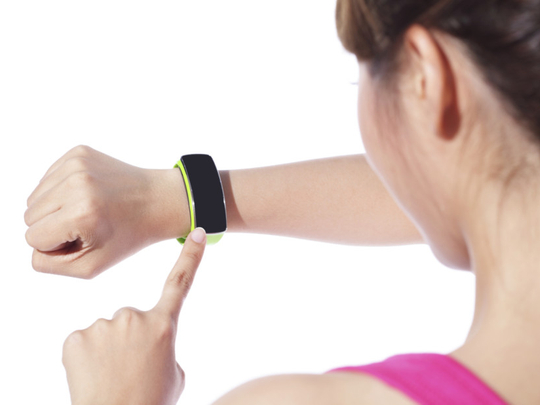
Dubai
Wearable technology is set to be the next wave of mobile computing, potentially paving the way for the Internet of Things to materialise on the consumer side.
Wearable technology integrates computing and wireless technology into everyday objects like wristbands, watches and even clothes. They are set to be the next wave of mobile computing, shifting the Internet of Things from an industrial focus towards the consumer side as leading hardware and technology businesses are developing solutions to capitalise on the wearable technology wave.
Now that the smartphone market has evolved towards a more predictable duopolistic high-end and homogeneous, yet highly fragmented low-end, the battle is shifting away from smartphones to wearable technology.
The disruption potential of wearable technology has not materialised so far, not least due to the missing value added for consumers. Nevertheless, leading hardware and technology businesses as well as start-ups are developing solutions to capitalise on this new wave of mobile computing, potentially overcoming many issues around wearables which have missed the mass-market appeal so far.
However, the impact from wearables on revenues and earnings of large US tech companies will remain limited in the short term.
“The expectation is that the consumer side of wearables will evolve beyond single-use fitness bands to multi-functional smartwatches, glasses and even smart clothing and jewellery, which we expect to make the larger share of a potential 90 billion market by 2020,” said Fabiano Vallesi, next generation analyst at Swiss private banking group Julius Baer.
Wearables are nothing new as various military forces have developed headgears for aviators since the 1960s, while calculator watches have existed since the 1970s.
“What is new is the potential broader appeal to the consumer market, as with advances in miniaturising circuitry, sensors, battery and wireless technology. Wearables have significantly increased the user-friendliness and potential applications of the concept. The application range of this emerging technology is vast,” he said.
Wearables could, for example, allow people to constantly monitor their personal health, while automatically sharing this health data with doctors, potentially improving therapy outcomes. Furthermore, wearables could also fetch context-specific information serving real-time needs, consequently increasing convenience and potentially having a positive impact on lifestyle, work and improving safety.
Feature phones were disrupted by smartphones and notebook computers by tablets, he said, and added that wearables might have far-reaching impact by creating a new category in the technology space. They may disrupt or accelerate change within industries outside of technology such as in health-monitoring devices.
The big US tech companies have raced to launch with wearables a new mobile computing category, as growth in smartphone sales in developed countries has levelled off and only the $150 and below mark is expanding in emerging markets.
The “main driver” in the smartphones and the wearables market at the moment is the “overlap given by the vendors” concerning technology and applications.
With Apple and other branded watchmakers entering the smartwatch segment, the industry is eager to watch in which way the market is heading to.
Smartphone manufacturers like Samsung, LG, Sony, Huawei and Lenovo are the big players in this space and the wearable devices have not been big sellers for the tech companies.
According to research firm Strategy Analytics, Apple could sell around 15.4 million devices this year in comparison to less than 5 million watches sold last year by all makers.
Strategy Analytics director Cliff Raskind said in an emailed statement that Apple will become the top smartwatch manufacturer and grab 55 per cent of the global market share.
Global smartwatch shipments are forecast to reach 28.1 million units in 2015, up 511 per cent from the 4.8 million units shipped in 2014.
Neil Mawston, executive director at Strategy Analytics, said that Apple Watch will ignite the market due to Apple’s brand value, loyal fan base, deep retail presence and extensive apps ecosystem.
However, he said that Apple’s first-generation Watch is not yet perfect and it needs to upgrade to second-generation watch tangibly to stay ahead of competition later this year.
If Apple succeeds, Antonios Maroulis, analyst at IHS Technology, said that other smartwatch makers will benefit from the increased addressable market. If Apple fails to make a case, then the smartwatch category will remain a niche and all smartwatch makers will suffer.
“The smartwatch market is still undefined. We are at a time similar to the point when Apple launched the iPhone into the smartphone market. All kinds of companies, smartphone OEMs, start-ups, wristwatch makers, are trying to catch the eye of consumers,” Maroulis said.
Vallesi said the new generation of wearables coming up generates vast amounts of data, mainly in real time, and can be directly or indirectly (via another electronic device e.g. smartphone) connected to the internet.










